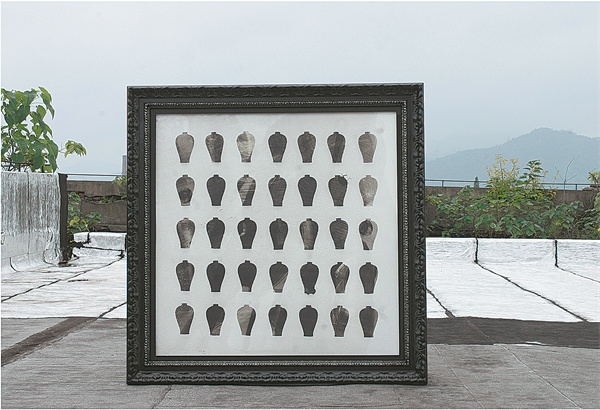

The idea of her own ceramic works possibly being appreciated in the distant future had her opt for ceramic art in 2008, her second year at the Central Academy of Fine Arts in Beijing.
"It was an informed choice after spending the first year taking in general art."
The experience opened her eyes to the world of ceramics, especially modern pottery, and enabled her to pick up art skills and mature her understanding of the medium.
After graduation in 2011, Liang continued her artistic pursuit at Jingdezhen, a world-famous ceramic capital in East China's Jiangxi province.
"I wanted to make further inroads into art, so I went there to get more training and inspiration," she says.
There, she interacted with artists from different parts of the world, while soaking up the presence of traditional ceramic art.
"I realized how traditional art is closely related to life," she says.
"It's pretty impressive to see how artisans push a handcart of molded pottery and sculptures past you and how pottery is sent to the kiln."
Moreover, the distinctive natural surroundings and southern food, quite different from her northern hometown, have also stimulated her passion for nature.
"All of it has hammered home to me that my works should be based on life and people," she says.
After five years working and living at Jingdezhen, Liang got an offer and a scholarship from the New York State College of Ceramics at Alfred University.
That was when Liang experienced the differences between the Oriental and Western interpretations of ceramic art.
"In China, ceramic is tightly connected with culture and history, and we have a sense of awe toward ceramic art and pay more attention to inheritance," she says.
But in the US, focus has been given to breaking away from the past, she explains.
In 2018, during her study at Alfred University, she tapped into her sense of confusion and created the work, I Do Not Know I Am a Guest When I Dream.
"The professor asked us to choose a word to describe ourselves, and I went for 'foreigner'," she recalls.
Then, she was further inspired by her American classmate, who told her all of them were foreigners in some way.
"It was then that I realized it's not just on the physical level, but a spiritual one as well," she says.
"This uncertainty of living in a foreign environment is uncomfortable, but it also contains possibilities that we can't imagine."
The 2018 series features human beings, animals, plants and vessels, which Liang says represented her dissociation from herself, which is a common psychological defense mechanism against pressure in the real world.
"I put my anxiety, fear, and facts that I cannot accept right away into these 'containers', and they support the heaviness of my emotions and try their best to stand on the floor," she says.